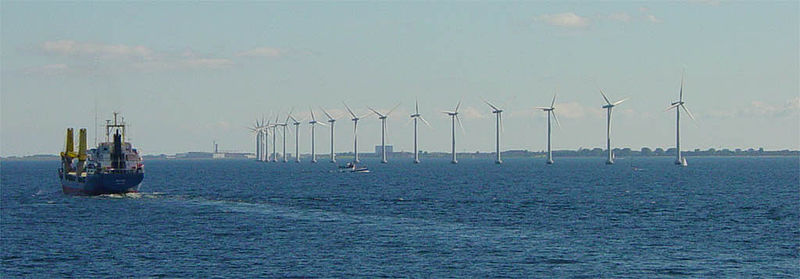The Biden administration’s plans to erect a string of giant offshore wind-energy projects off the Atlantic, Pacific, and Gulf Coasts is encountering stiff headwinds from local residents who will have to deal with the economic and ecological consequences of the ruling class’s embrace of renewable energy.
On Nantucket Island, Massachusetts – not far from tony Martha’s Vineyard – residents have filed suit challenging the pre-construction environmental review for the of proposed Vineyard Wind project, which would install 100 giant turbines 14 miles offshore. Plans are already in place, however, to expand to adjoining lease areas and install a total of 600, 650-foot-high turbines in the region’s offshore waters. The Nantucket residents join groups forming from North Carolina to New England and along the Great Lakes seeking to protect their communities and wildlife from the damages they fear will be inflicted once the turbines’ rotors start spinning.
On Nantucket, citizens have formed the group ACK Rats, playing off the code name for the local airport, ACK, with Rats standing for “Residents Against Turbines.”
“Some people oppose the offshore wind development because it will harm their ocean view. Some people oppose it because it will result in higher electricity rates. Some people oppose it will hurt commercial fishing,” said Val Oliver, co-founder of ACK Rats, in a statement.
“While these are all valid and true concerns, what motivates us in our opposition to the industrial offshore development is the fact that it will result in the destruction of our ocean floor, its ecosystem, and will have a deadly impact on countless birds, bugs, bats, fish, and the critically endangered North Atlantic Right Whale. Saving these species, especially the critically endangered Right Whale, is why we are here today.”
Environmental Damage
The ACK Rats’ suit says the federal Bureau of Ocean Energy Management (BOEM) in its Environmental Impact Statement (EIS) and in a supplement to the EIS, failed to take the requisite “hard look” at Vineyard Wind’s impact on whales and other sea mammals, fish, birds, sea turtles, air quality, greenhouse gas emissions, cultural resources, aesthetics, and other resource categories.
The lawsuit also say BOEM’s two 1970National Environmental Policy Act (NEPA) documents also failed to examine a legally adequate range of alternatives, and failed to mitigate the project’s impacts, along with grossly underreporting the project’s cumulative impacts.
Meanwhile, The Jefferson Journal reports that a broad coalition of multi-state offshore wind opponents is prepared to combat the well-funded and well-subsidized wind energy industry. They call themselves “Coalition for Ocean Protection and Safety.”
One of the coalition’s leaders is David Stephenson of the Caesar Rodney Institute in Delaware. Stephenson, Virginia’s Thomas Jefferson Institute for Public Policy (publisher of The Jefferson Journal), and others are keeping a close eye on the ACK Rats’ suit. If BOEM’s EIS for Vineyard Wind can be struck down in court, they hope this will send a shot across the bow of a similar proposed project off the Virginia coast.
Wind Off Virginia’s Shores
Dominion Energy, a Richmond-based utility, is behind the Coastal Virginia Offshore Wind project, which will be located 27 miles off the coast of Virginia Beach. In its first phase, Dominion says the project will have the capacity to deliver 2,600 megawatts of power. The Virginia State Corporation Commission (SCC) estimates the total consumer cost of the Dominion project at $37 billion by 2030, because the power provided will come from unreliable wind.
Currently, the U.S. has only one offshore wind project “in operation,” the five-turbine, 30-megawatt Block Island project off the coast of Rhode Island. Block Island went into operation in 2016 but now lies still. Four of its turbines aren’t working due to stress fractures, a problem that has plagued offshore wind turbines in Europe.
Rapid Loss of Efficiency
Advocates of wind power – offshore and onshore – proudly tout their projects’ “capacity” to produce a certain amount of power.
But capacity should not be confused with actual production.
Even though the wind blows more consistently offshore than on land, seaborne wind turbines start losing their efficiency as soon as they go into operation, and their efficiency deteriorates from year to year. By the time they reach the end of their life cycles – about 20 years – their production is far below what was originally advertised.
Replacing dead offshore wind turbines is an expensive proposition, with the costs passed on to ratepayers. And the new turbines that replace the old ones are subject to the same ever-decreasing efficiency.
Offshore wind is snake oil in its purest form. Keep it away from your beach.
Bonner R. Cohen, Ph.D., (bcohen@nationalcenter.org) is a senior fellow at the National Center for Public Policy Research and a senior policy analyst with the Committee for a Constructive Tomorrow (CFACT)..
This article was originally published by CFACT and is republished with permission.
